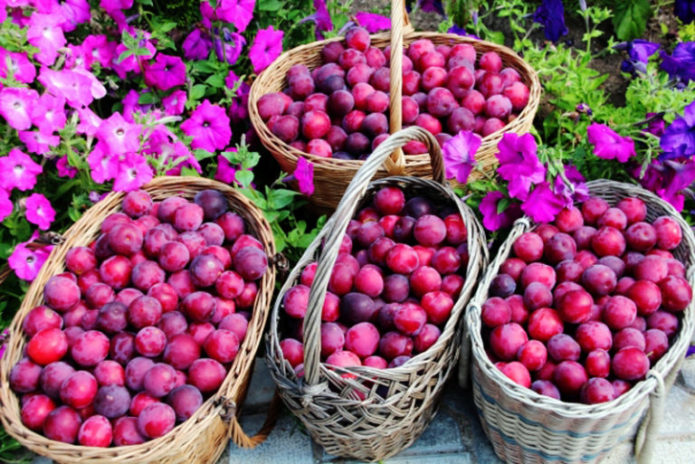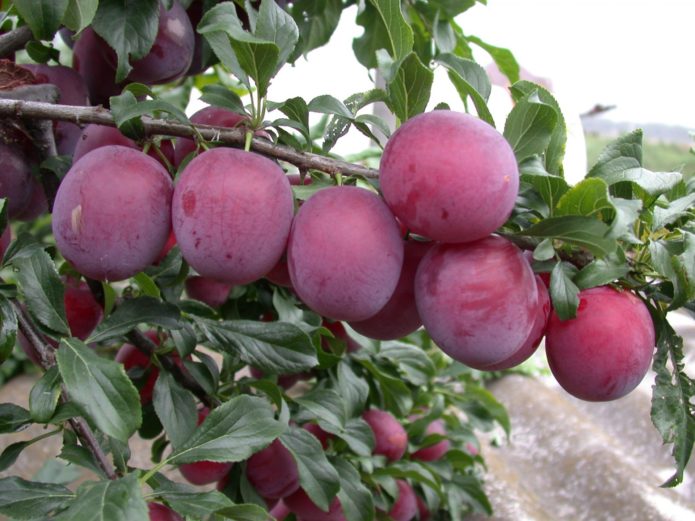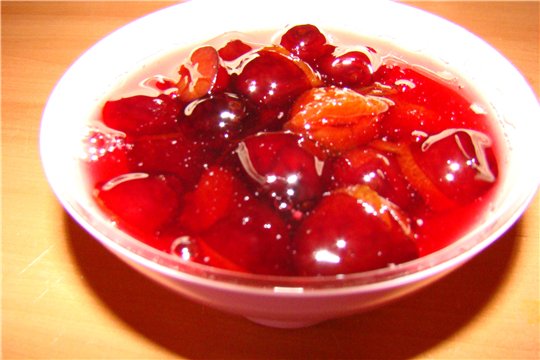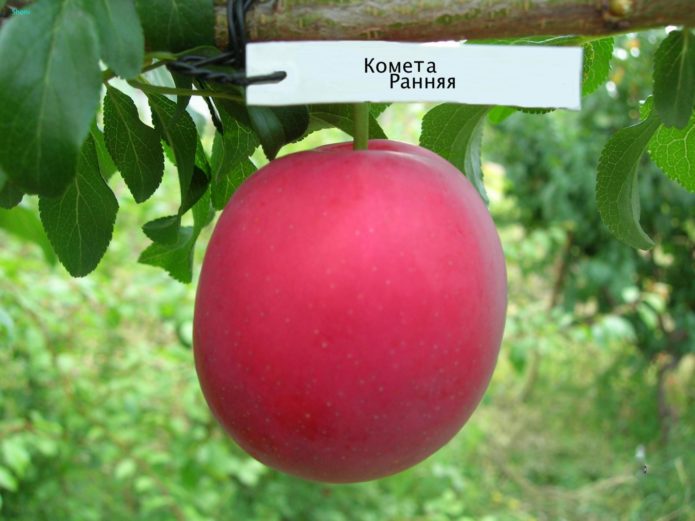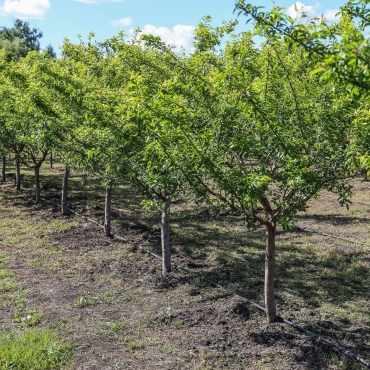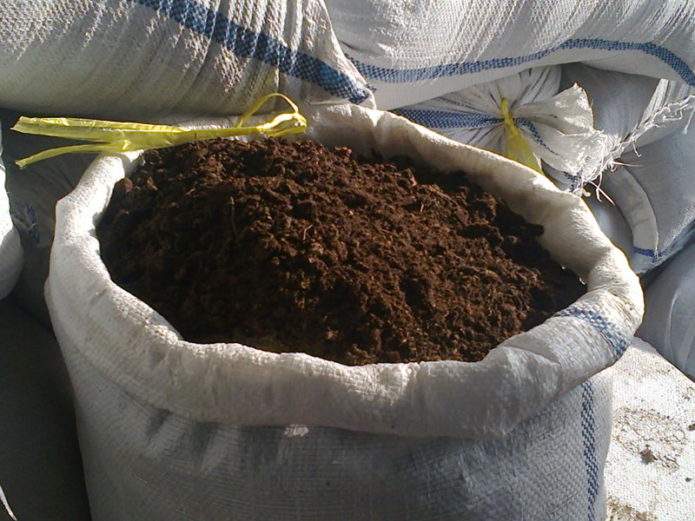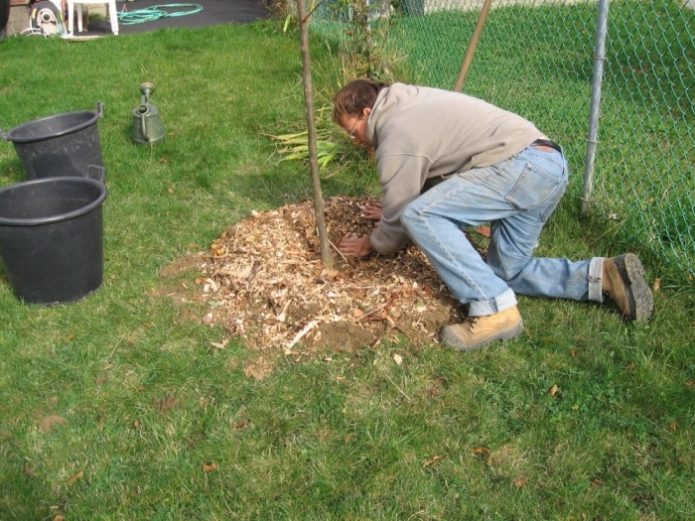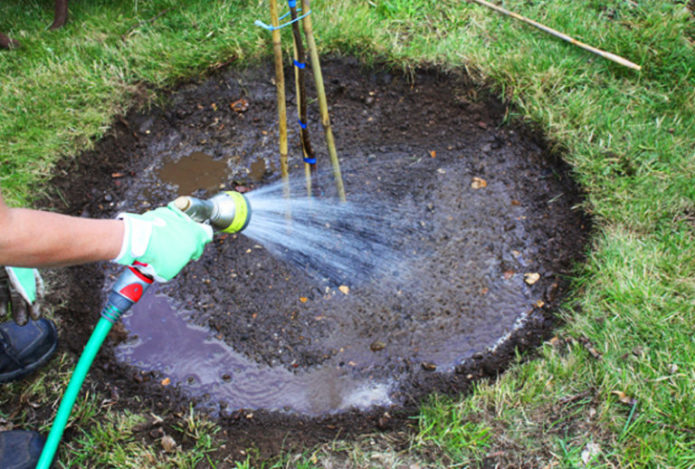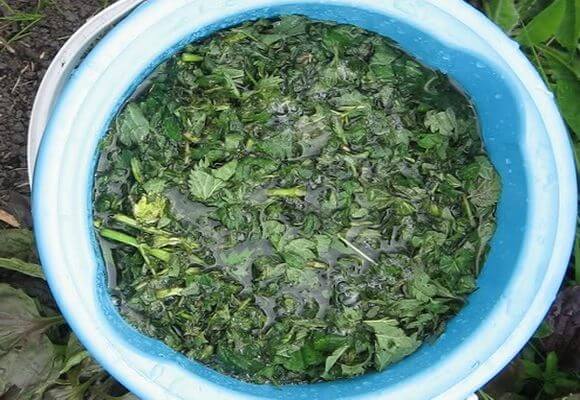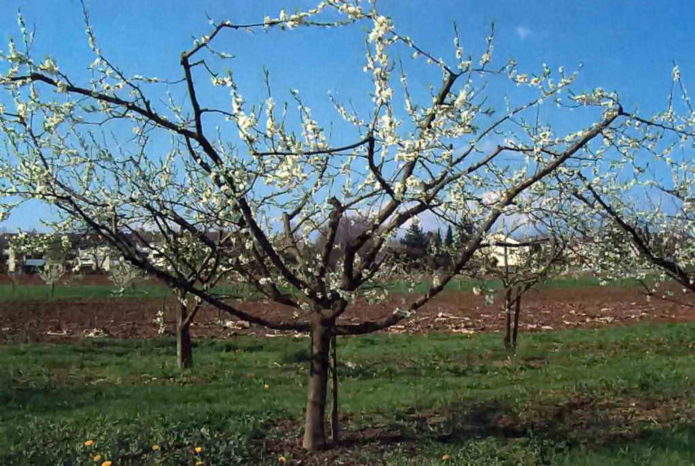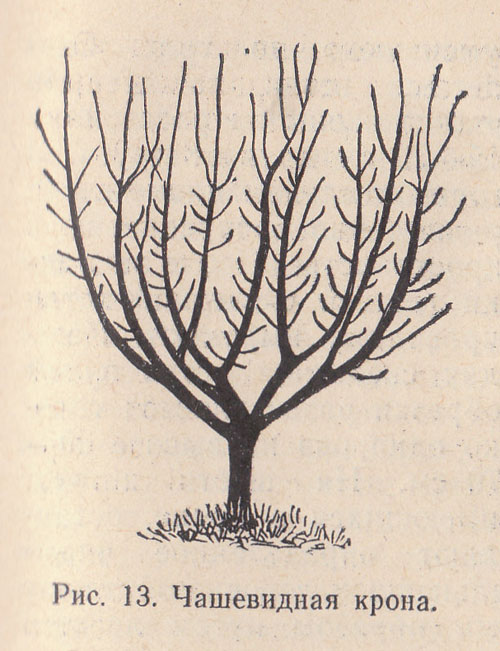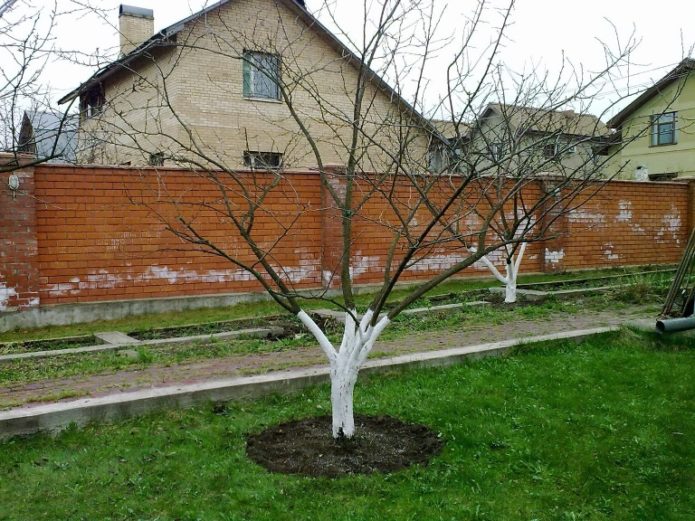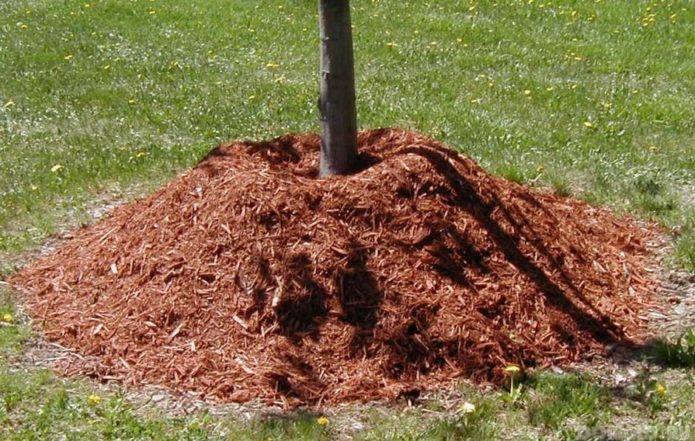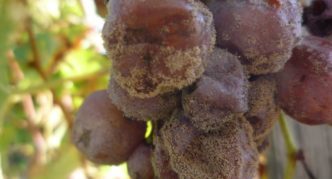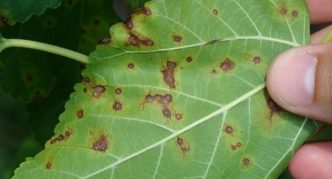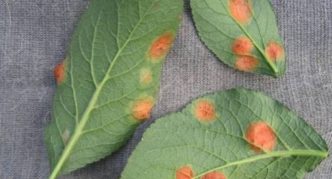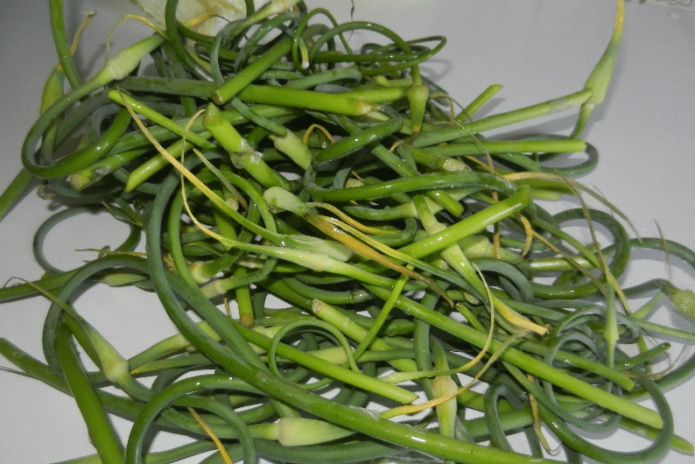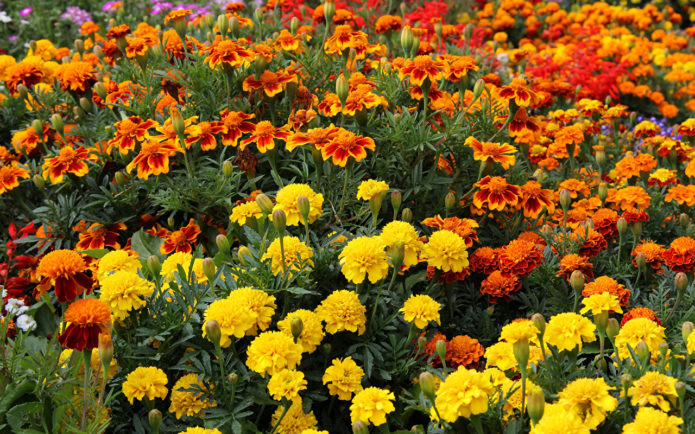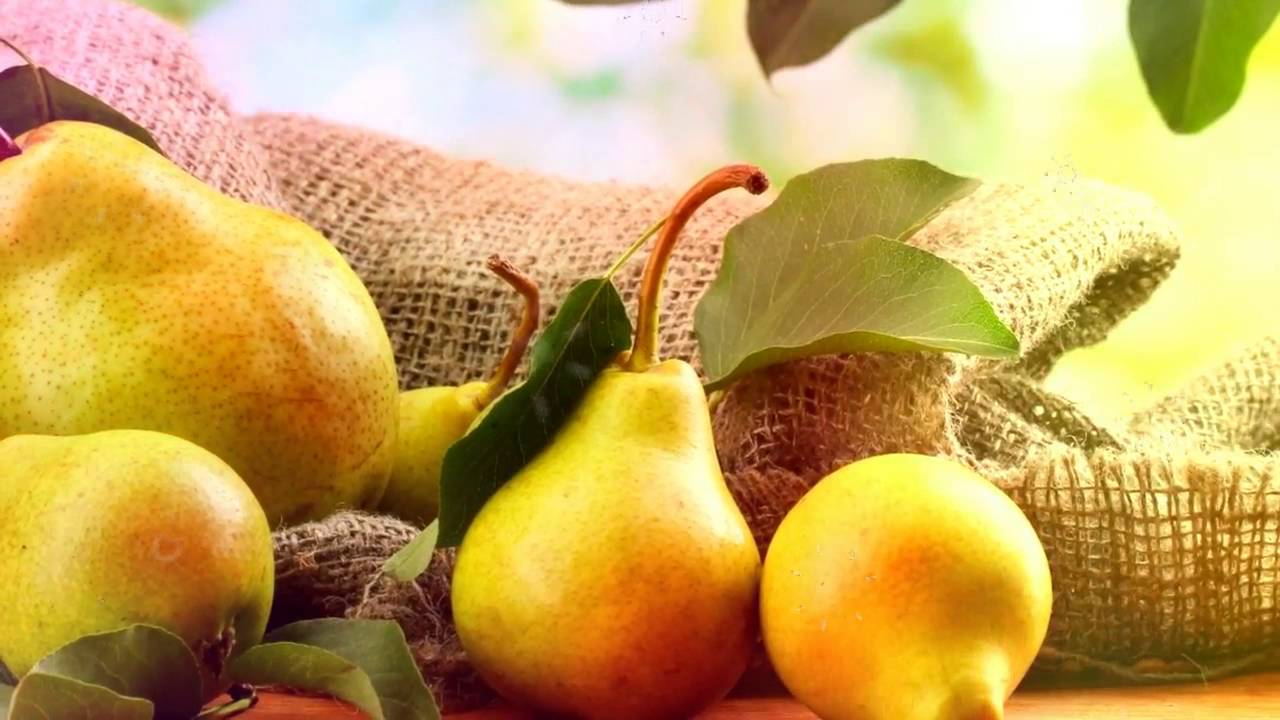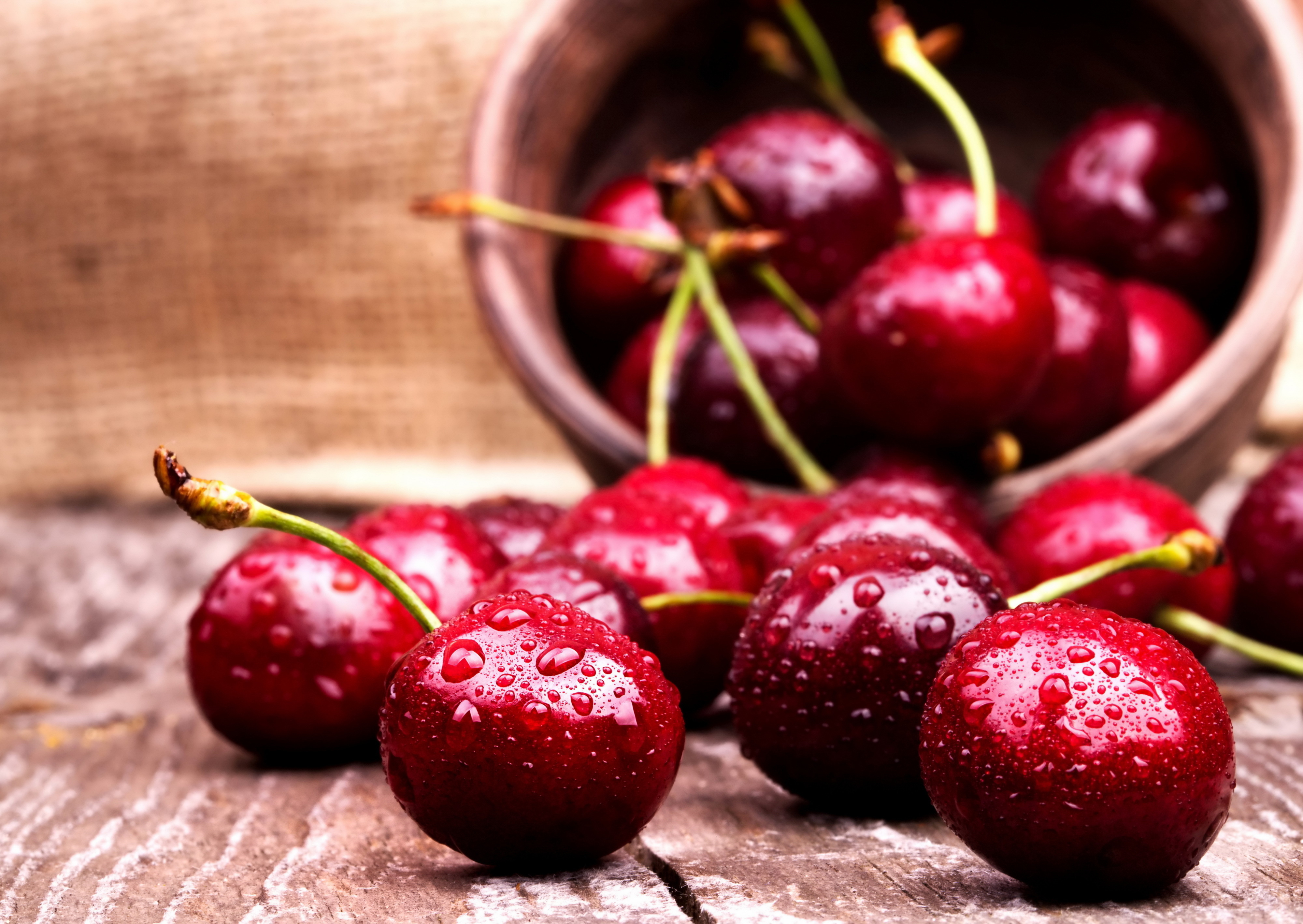Cherry plum among Russian gardeners is much inferior in popularity to apple trees, pears, plums and cherries. Until recently, breeders also did not show much interest in this crop. Therefore, the range of varieties is rather limited. The most common can be called the Kuban comet. This variety very successfully combines simplicity in care and compactness of the tree with excellent taste of the fruit and high yield. Very good winter hardiness makes it possible to cultivate it practically throughout the entire territory of Russia.
Content
Cherry plum Kuban comet: description of the variety, advantages and disadvantages
The Kuban comet, which it would be more correct to call a hybrid cherry plum or Russian plum, was included in the State Register in 1987. Prior to that, the variety had been tested for more than ten years. According to their results, it was recognized as suitable for cultivation in the Black Sea region, in the south of the Volga region, the North Caucasus and in the North-West region. However, the practice of its cultivation indicates that the variety successfully takes root in the Moscow region and central Russia, in the south of the Urals and in Primorye.
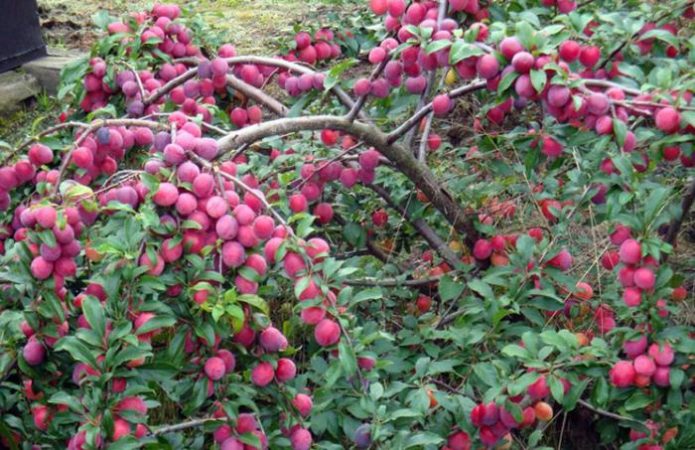
The Kuban comet is one of the most popular varieties of cherry plum or Russian plum among gardeners, with many undeniable advantages, it is practically devoid of disadvantages
The ancestor of the culture is the wild cherry plum, widespread in the Crimea, Central Asia and the Caucasus. Purposeful breeding work began in the 20s of the last century. The first experiments of botanists in taste differed little from wild-growing specimens, but even in this form they were in demand by gardeners. After all, the trees were distinguished by their rare unpretentiousness in care and a consistently high yield.
A new variety was bred in the Crimea, its “parents” were Skoroplodnaya plum and Pionerka cherry plum. From the first, the hybrid inherited early ripening and yield, from the second - the appearance of the fruit.
By the timing of the ripening of the crop, the variety belongs to the category of early ripening. The tree reaches a height of 3 m, no more, which facilitates the process of caring for it and collecting fruits. The crown of the correct spherical shape, with age, as it were slightly "squats", becomes a little flattened, increasing to 4–5 m in diameter. The side branches are rather short, so it does not differ in thickening. Most often, the crown is given a configuration without a pronounced central shoot, such a tree looks more like a shrub.
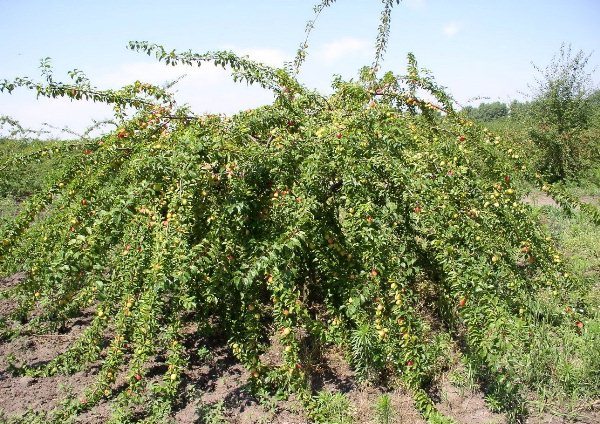
The height of the cherry plum Kuban comet is small, this greatly facilitates tree care and harvesting
Cherry plum The Kuban comet is distinguished by quite good frost resistance. Resistance to diseases typical of the culture is also above average. This cherry plum is extremely rarely infected with clasterosporiosis and moniliosis. Wood and roots do not suffer when the temperature drops to -30 ° C. Flower buds are less cold-resistant. In addition, the tree blooms quite early, in the last ten days of April, so it often falls under returnable spring frosts. But even the buds affected by the cold weather quickly recover, the yield after that does not suffer in any way. The tree blooms very profusely. Therefore, the Kuban comet can be planted not only for the sake of the harvest, but also to decorate the site.
One of the undoubted advantages of the variety is its very high yield. The tree bears its first fruits within 2–3 years after planting in a permanent place. There are no further breaks in fruiting. The average yield depends little on the vagaries of the weather and is about 10 kg for a tree under five years old and 50-60 kg for adult specimens. Cherry plum matures gradually, the period of its collection stretches for 3–3.5 weeks. Depending on the weather, during spring and summer, the first berries are picked in the second half of July or early August.
The fruits are large, shaped like an egg, slightly sharpening at the base. They are asymmetrical, one half larger than the other. The average weight of a berry is about 30 g, some gain weight up to 45 g. The peel, as it ripens, changes its color from reddish-yellow to deep burgundy, completely covered with a thin layer of bluish-blue bloom. It is not particularly dense, but at the same time durable. This determines the ability of the fruit to be stored for a long time and to transfer transportation without damage to itself. The lateral "seam" is superficial, weakly expressed.
The pulp is a bright golden-yellow hue (pinkish at the very skin), very dense, juicy, with a rich aroma, fibrous in consistency. The taste of the Kuban comet is pleasant and refreshing - sweet, with sourness. It is somewhat reminiscent of an apricot. Professional tasters highly appreciate both fresh fruits and their preparations and juice. The scores are 4.6, 4.4 and 4.5, respectively, with a possible maximum of five. The stone is small, it is extremely difficult to separate it from the pulp. This is perhaps the only objective disadvantage of the variety.
As well as the not very successful characterization of the Kuban comet, the need to ration the harvest is noted. If a lot of fruits are tied, they become very small. Therefore, when they reach about the size of a hazelnut, you need to remove the least well-located ovaries - those that will not receive enough heat and light.
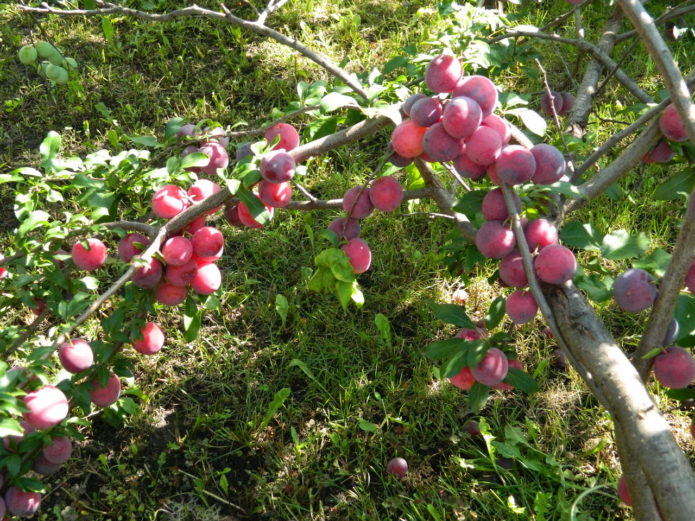
Under the weight of the harvest, the branches of cherry plum Kuban comet often bend and even break, it is better to take care of the props in advance
Fully ripe fruits do not fall from the tree for a long time and do not crack, their taste does not suffer. You can also shoot an immature Kuban comet. Cherry plum matures successfully during storage. At room temperature, the fruits do not deteriorate for 7-10 days. If you put them in the refrigerator, the shelf life is increased to 25-30 days.
The purpose of the fruit is universal. They are eaten fresh, used in home canning and as a filling for baking, squeezing juice. And from unripe cherry plum in the Caucasus they prepare delicious sauces for meat dishes.
The Kuban comet is one of the few exceptions when it comes to self-fertility. The tree does not need pollinators to set fruit regularly. Nevertheless, the practice of growing this cherry plum indicates that the presence of other varieties of culture or Chinese plum on this garden plot has a positive effect on the size and taste of the fruit.They cope well with the role of pollinators of the Mara, Traveler, Red ball, Pramen, Gift to St. Petersburg, Orlovsky souvenir varieties, but others can be used if they bloom at about the same time.

Cherry plum is a suitable pollinator for the Kuban comet, cross-pollination improves the yield and fruit quality of both trees
Due to its characteristics, the Kuban comet variety is widely demanded by breeders. On its basis, two "clones" were derived - the early and late comet. The first is intended for cultivation in warm southern regions, the second successfully tolerates more severe cold than the "parent". Both are better adapted to drought, but did not inherit self-fertility.
Video: what cherry plum looks like Kuban comet
Planting a seedling in the ground and preparatory procedures
The unpretentiousness of the Kuban comet extends to the growing conditions. But although they are minimal, this culture also has its own requirements. Satisfying them is not so difficult, and the tree will more than thank the gardener for this with bountiful harvests.
The seedling is chosen very carefully. It is better if he has a closed root system. This allows you to avoid problems during transportation, such a tree will wait for disembarkation without any problems. The experience of cultivating the Kuban comet shows that two-year-old seedlings take root in the new place best of all and with the least damage to themselves. Such a tree reaches a height of 1–1.2 m, the root system (if it is possible to assess its condition) is developed, fibrous, the branches bend easily, but do not break. Several lateral shoots and swollen buds are required. The bark is even, of a uniform color. The cut wood is greenish-beige, slightly damp. At the base, as a result of grafting, a small influx is formed. Instances that do not have it are grown from seeds. It is impossible to guarantee the presence of varietal traits in them in full.
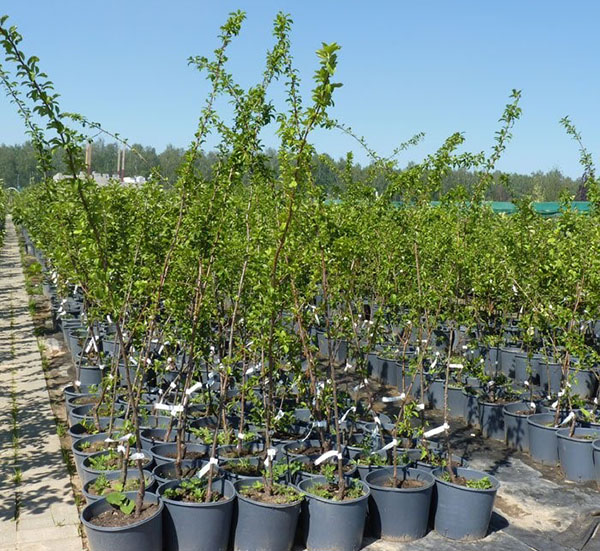
Cherry plum seedlings with a closed root system tolerate transportation better, then it is easier to prepare them for planting
The Kuban comet, as well as other landing material, is purchased exclusively from suppliers that have proven their reliability. A purchase made at a market, fair or simply by hand is often disappointing. Very few gardeners can recognize cherry plum in the proposed seedling, especially the desired variety.
In order for the cherry plum fruits to acquire the dimensions and taste declared in the description of the variety, they vitally need warmth and sunlight. If the culture is planted in the shade, the berries turn out sour, it is almost impossible to eat them fresh. For a tree, an open area must be selected. It is not particularly sensitive to drafts and gusts of wind.
In principle, the Kuban comet tolerates a substrate of almost any quality, with the exception of a saline and outright swamp. But light, loose soil with a neutral or slightly acidic acid-base reaction is best suited for it. This, for example, sandy loam or forest gray soil. Many deficiencies in the substrate can be corrected during the preparation of the planting pit. Coarse sand is introduced into heavy clay soil, which is poorly permeable to water and air, coarse sand is introduced into acidic - dolomite flour, egg shell powder, into alkaline soil - peat, needles or fresh sawdust of coniferous trees.

Dolomite flour is a natural soil deoxidizer that, if the recommended dosage is observed, does not have any side effects
The culture also does not tolerate soil acidification at the roots very well. In such conditions, their rotting is almost inevitable. Any lowlands, as well as areas where groundwater is higher than 1 m from the soil surface, are not at all suitable for landing the Kuban comet.
Bad neighbors for the Kuban comet are pear, cherry, sweet cherry, walnut and birch.There are different points of view regarding the apple tree. But most gardeners still agree that next to an old cherry plum tree, it feels good.
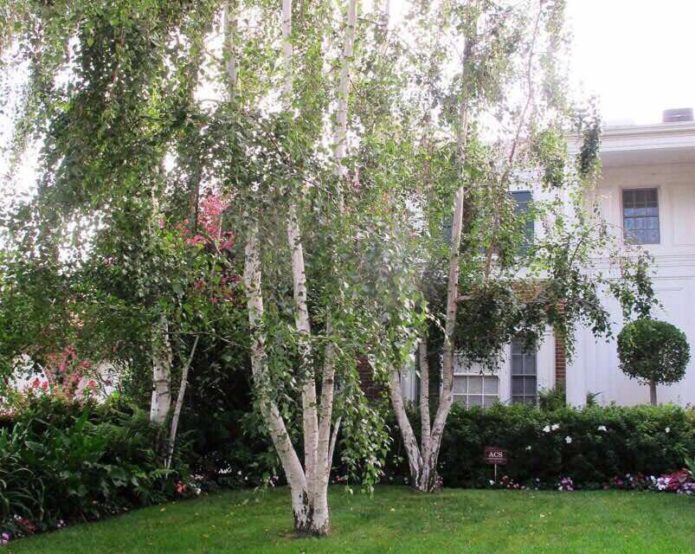
Birch is a bad neighbor for cherry plum Kuban comet, it has a much more powerful root system, it will simply "strangle" the fruit tree
The timing of planting cherry plum depends solely on the gardener himself. Both spring and autumn planting is possible. In the first case, the procedure is carried out in mid-April (in subtropical conditions) or closer to the end of May (in central Russia and to the north). In autumn, you also need to focus on the climate in the region - a plant will need at least two months to adapt to a new habitat. Where the calendar and actual winter more or less coincide, you can stretch out with landing until the end of September or even the beginning of October. If the climate is unpredictable, it is better to plan it at the very beginning of autumn.
Each tree needs to be provided with sufficient food area (7-9 m²). In the case of planting several seedlings at the same time, the minimum interval between them is 3 m. Pollination is better if they are not placed in a row, but as if at the vertices of a triangle.
It makes no sense to dig a very deep planting hole. The root system of the Kuban comet, although developed, is fibrous and superficial. Enough about 50 cm with a diameter of 80–85 cm. They always do this in advance. If the tree is planned to be planted in the spring, the hole is dug in the fall. Otherwise, it should be ready at least 15–20 days before the procedure. At the bottom, a drainage layer with a thickness of at least 5–7 cm is required. In addition to expanded clay, pebbles, crushed stone, clay shards, and brick chips will perfectly cope with this function.
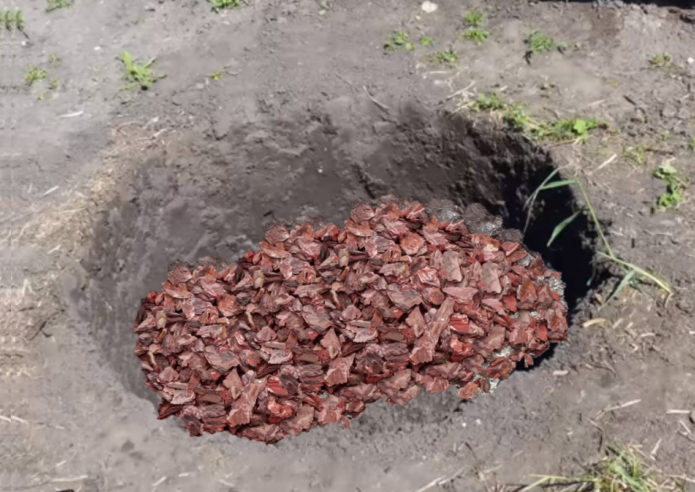
At the bottom of the landing pit for cherry plum Kuban comet, a drainage layer is required, this will prevent moisture from stagnating at the roots
A layer of fertile turf (top 10-15 cm) is laid separately. Then it is mixed with 12-15 kg of humus, simple superphosphate (220-250 g) and potassium sulfate or potassium magnesium (50-70 g). You can also use "combined" fertilizers - Nitrofosk, Diammofosk, Azofosk. And those who prefer natural fertilizing bring sifted wood ash into the planting pit. The resulting nutrient mixture is poured back so that a kind of mound forms at the bottom of the pit.
Planting a plant in a permanent place is a simple procedure. But it's better to get down to business together - for reasons of convenience.
- Slightly away from the center of the hole, a support for the seedling is stuck into the ground. This peg should be 20-25 cm higher than the tree itself. The soil is moderately moisturized.
- Seedlings with a closed root system are simply watered abundantly about 30-40 minutes before planting. The plant is then very easily removed from the container. Otherwise, the roots are soaked for 8-10 hours in a solution of any biostimulant. A comparable effect is given by both purchased preparations (Zircon, Epin) and folk remedies (baking soda solution, potato juice and aloe). Then they are examined, sections of dead and dried tissue are cut off. Healthy-looking roots are simply shortened by a couple of centimeters. After that, they are dipped in a mixture of fresh manure and powdered clay, diluted with water to the consistency of fat sour cream, and the mass is allowed to harden in the sun.
- For a seedling with a closed root system, a small depression is made at the top of the mound. It is removed from the container, trying to keep it as a whole earthen lump if possible. Other specimens are placed so that the roots "descend" along the slopes, and not stick up and sideways. They begin to fill the hole with earth little by little, periodically compacting the soil with palms so that no air pockets remain. As a result, the root collar should be 4–7 cm above its edge.
- After filling the hole, the soil is tamped again. Cherry plum is watered abundantly, consuming 25–30 liters of warm, settled water. The tree is fixed in an upright position, tied to a peg.
- The near-trunk circle (about 50 cm in diameter) is mulched, covered with humus, peat chips, rotted sawdust, and hay. Lateral shoots are cut to the point of growth, the central one - 5-7 cm above the last branch.
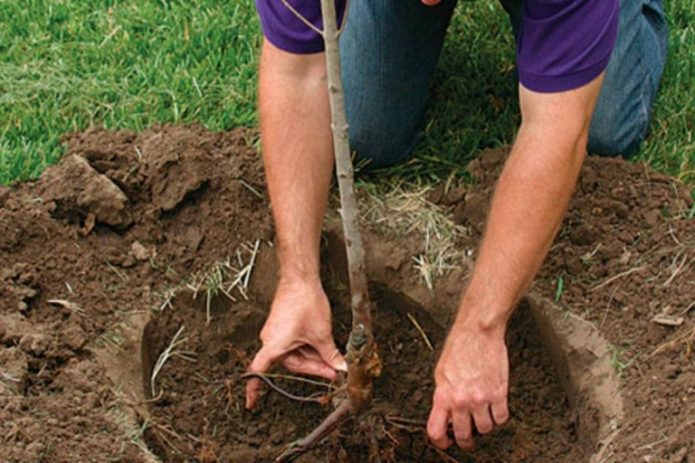
There is nothing difficult in planting a cherry plum seedling in the ground, even a novice gardener can handle it
Video: how to properly plant a cherry plum seedling in the ground
Cherry plum transplant is a rather time-consuming and not always, in principle, a feasible procedure. Therefore, it is advisable to immediately choose a place for the Kuban comet, taking into account all the recommendations. If, nevertheless, there is an urgent need to move it, a ditch is dug around the tree with a depth of at least two bayonets of a shovel, approximately the same diameter as the crown. Then the cherry plum is dug in from below, transferred with an earthen lump on a sheet of iron or a piece of linoleum and transported in this form. Transplant is carried out in the spring, while the leaves have not yet blossomed. During the growing season, the tree is provided with more frequent watering. About half of the formed fruits are cut off so that the forces go mainly to the restoration of the root system.
Nuances of culture care
In order for the tree to bear fruit stably and abundantly, the Kuban comet requires minimal care. This is one of the indisputable advantages of the variety. The near-trunk circle must be kept clean, regularly weeding out weeds and removing root growth.
Watering
The root system of the Kuban comet is developed, but superficial. Therefore, the tree does not tolerate prolonged drought. He needs relatively rare but abundant watering. On a young tree, from May to August, 30–40 liters of water are consumed per month, the rate for an adult is increased to 40–50 liters. The next day after the procedure, the soil must be carefully loosened shallowly and mulch added.
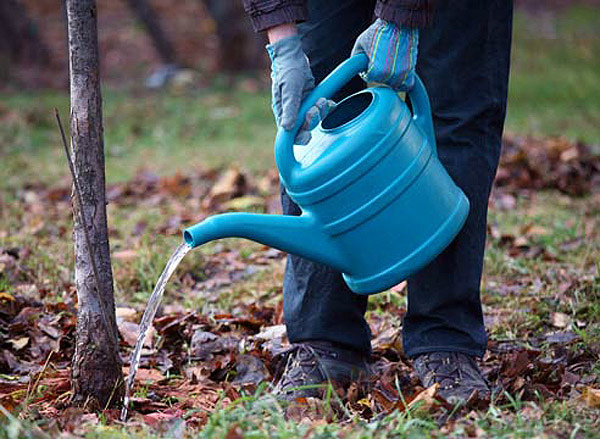
The root system of the cherry plum Kuban comet is superficial, so the plant does not tolerate prolonged drought
Watering prior to harvesting is planned so that 3-4 weeks remain until the cherry plum is fully ripe. If carried out later, the fruits will not gain the sweetness inherent in the variety, the pulp will be watery and less juicy.
Instances require more frequent watering before first fruiting. The soil is moistened once every 2–2.5 weeks, preventing it from drying out. Starting from August, watering is stopped completely so that the tree stops forming new shoots. Young twigs will not have time to get stronger by winter and are guaranteed to freeze out.
Fertilization
Top dressing is applied annually, with the exception of the first season of the Kuban comet's stay in the open field. At this time, the tree is provided with everything necessary due to the nutrients added to the planting hole during its preparation.
During the spring, 40 g of carbamide or other nitrogen fertilizer is applied for each square meter of the trunk circle. It is advisable to divide the whole portion into 2-3 times. The first time the Kuban comet is fed when the soil thaws enough to be loosened, the last - immediately after flowering.
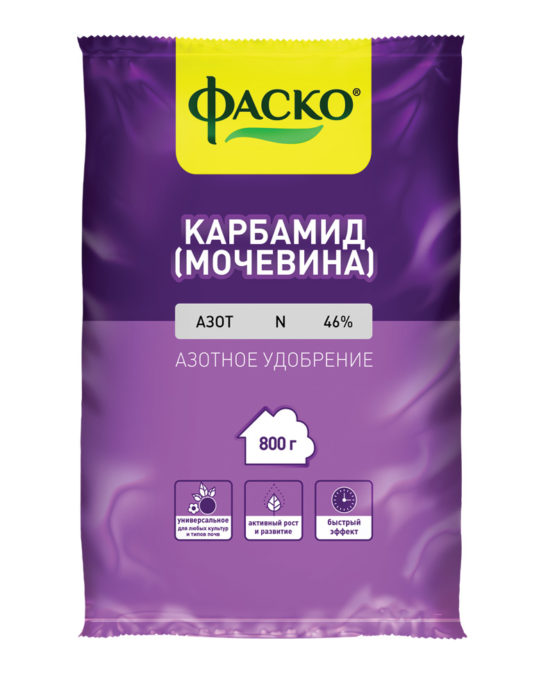
Urea is a common nitrogen-containing fertilizer that helps the tree begin to grow green after hibernation
About a month before the expected harvest, complex feeding is required. In addition to store-bought fertilizers for fruit trees, you can use an infusion of fresh cow dung, bird droppings, nettle and dandelion leaves. The latter is usually added to two tablespoons of simple superphosphate and potassium sulfate per 10 liters.
Starting from the first days of June, it is useful to scatter wood ash in the trunk circle once every 2-3 weeks. It is a natural source of phosphorus and potassium, which is vital for ripening fruits.
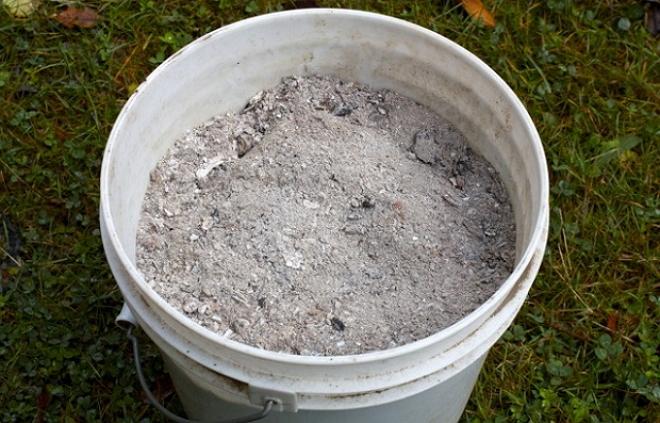
Wood ash is a natural source of phosphorus and especially potassium, which is vital for ripening cherry plums
In mid-September, to maintain soil fertility, 4–5 kg of humus per 1 m² are distributed along the near-trunk circle. It is immediately embedded in the soil in the process of loosening. After 7-10 days, phosphorus-potassium fertilizers (ABA, Autumn) or the same wood ash are applied.
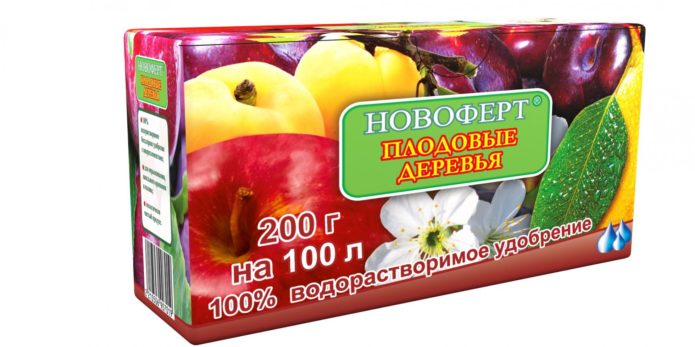
In the fall, you can feed the cherry plum with fertilizers for fruit trees, but always without nitrogen.
Video: tips for caring for cherry plum
Crown formation
The most suitable for the Kuban comet is a tiered configuration that resembles a vase or bowl. This allows you to limit the growth of the tree at the desired height (although it does not stretch so much), give it a great decorative effect, and thin out the crown as much as possible so that all fruits receive enough heat and sunlight. As a general rule, the colder it is in the region, the lower the tree should be.
Young trees of the Kuban comet are distinguished by active growth, adding up to 50-60 cm during the growing season. When the tree reaches the age of five years, the speed slows down a little, and it is enough to just maintain the created configuration. It takes 3-4 years to form a cup-shaped crown.
With this scheme, the height of the trunk to the first fork is no more than 25–30 cm. Then 6–9 skeletal branches are located around it at approximately equal intervals. 2-3 powerful shoots, forming an angle of 50-60 ° with the trunk, are left annually, cutting off the rest to the point of growth. The center conductor is cut about 10-15 cm above them. Shoots are shortened by about a quarter annually, from the moment they grow to 80 cm in length.
Most of the pruning work is planned for the spring. First of all, they get rid of those shoots that did not survive the winter (froze out, broke under the weight of ice and snow, and so on). The procedure is carried out exclusively at an air temperature above 0 ° C. In the spring, you need to be in time before the leaf buds begin to open; in the fall, the tree should completely lose its foliage.
In summer and autumn, they carry out small, mainly sanitary pruning. Branches affected by diseases or pests, dried out, broken, as well as young growth, thickening the crown (shoots directed inward and downward), formed on the trunk below the fork, are immediately removed.

Any work on pruning cherry plum is carried out only with a pre-processed tool to avoid infection with pathogenic fungi, viruses and bacteria
Video: the process of forming a crown-bowl
Preparing for winter
When planted in regions where the temperature does not drop below -30 ° C, adult trees of the Kuban comet endure winters without much damage to themselves. Even after being damaged, they quickly recover, this has little effect on the harvest of the current season.
Preparation for winter necessarily includes deep loosening of the trunk circle and cleaning it from all kinds of plant debris. Then the trunk of the tree is covered with whitewash until the fork and the lower part of the branches. The easiest way is to purchase the appropriate composition in the store, but you can prepare it yourself. The necessary components are readily available - these are water, powdered clay, hydrated lime, copper sulfate and office glue.
The trunk is wrapped in several layers of any air-permeable fabric, shifting it with coniferous branches. In the spring, you can take your time to remove the shelter; the Kuban comet suffers extremely rarely from the root collar heating.
The trunk circle is covered with mulch. The optimum layer thickness is about 10 cm. It is desirable to build a mound 20-25 cm high near the trunk. Later, snow is raked up to its base, creating a snowdrift.It gradually settles; during the winter, the structure will need to be refurbished 2-3 times, in the process breaking the crust of hard crust formed on the surface.
Cherry plum under the age of five should be covered entirely. Very young seedlings, while their dimensions still allow, are covered with cardboard boxes, stuffing them with scraps of newsprint, wood shavings. It is undesirable to use straw and hay - mice and other rodents often settle there.
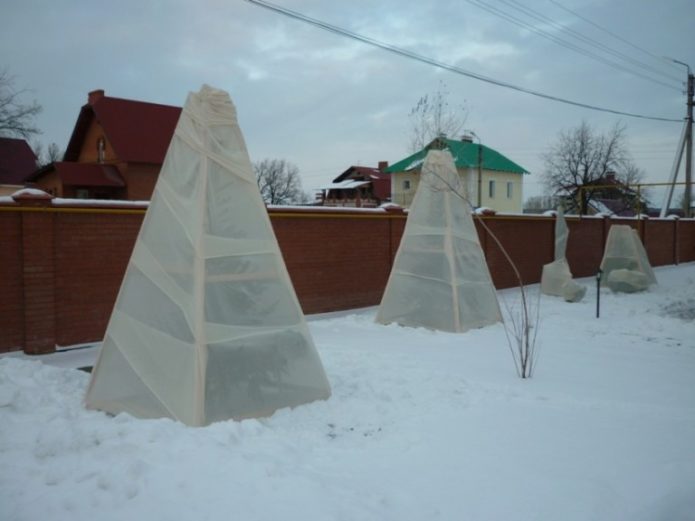
Young cherry plum seedlings tolerate the cold worse than adult trees, so it is advisable to play it safe and close them completely
Another option is to build something like a hut around the tree, pulling several layers of burlap, agril, spunbond over a frame made of poles. Plastic wrap is categorically not suitable, it does not allow air to pass through.
Video: preparing fruit trees for winter
Fighting disease
The Kuban comet bypasses clasterosporium and moniliosis, but, unfortunately, these are not the only diseases that are dangerous for culture. The same diseases are typical for her as for plums, so these trees are planted as far as possible from each other. The greatest damage to a tree is caused by:
- Gray rot. The leaves wither, the shoots take on a brown tint instead of the usual grayish. On the bark, spots of "fleecy" gray-white bloom with small black blotches are visible. Then the same symptoms appear on cherry plum fruits. They quickly rot, turn black and fall off. Such berries are unsuitable for food. If the disease was observed last year, the tree, until the buds have opened, and the soil under it is treated with Nitrafen or 2% copper sulfate. After flowering, Kaptan and Kuprozan are used. The fruits, when they reach the size of a cherry, are sprayed with a boric acid solution (1–2 g / l).
- Brown spotting. The disease, if left untreated, can destroy half of the entire crop or more. Leaves and fruits are covered with brown spots with an almost black border and a dot of the same color in the center. They grow quickly, the leaf plate dries. For prevention, use 1% Bordeaux liquid or copper oxychloride. Leaf buds in the green cone stage and the whole tree are cultivated 15–20 days after flowering.
- Rust. Rusty bulges of irregular shape appear on the front side of the sheet, the wrong side is covered with a continuous layer of saffron-yellow bloom, which gradually thickens and changes its shade to terracotta-orange or brick. For prevention, the soil under the tree is sprayed with a 5% carbamide solution in early spring. At the beginning of summer and after harvesting, they are treated with Baktofit.
Photo gallery: symptoms of fungal diseases dangerous for the Kuban comet
- Cherry plum fruits affected by gray rot cannot be eaten
- Brown spot, if not dealt with, will deprive the gardener of at least half of the crop
- The rust of cherry plum, most likely, will not kill, but the development of the tree will significantly slow down, and the yield will decrease
All pathogenic fungi do not tolerate copper compounds. Fungicides are used to combat them. The best option is preparations of biological origin, safe for human health and the environment (Fitosporin-M, Baktofit, Alirin-B, Maxim, Previkur). Usually 3-4 treatments are sufficient at intervals of 7-10 days.
For prophylaxis during the growing season, it is useful to alternate when watering ordinary water and a pinkish solution of potassium permanganate, to scatter wood ash and crushed chalk around the trunk circle. The tree is sprayed with an infusion of wormwood, onion or garlic arrows, kefir diluted with water with the addition of iodine.
Pests show no particular interest in the Kuban comet. But you can still play it safe and put on a special sticky belt on the tree, and hang a ribbon next to it for catching flies. They are effectively discouraged by spicy herbs and flowers with a pungent smell (lavender, marigolds, calendula) planted nearby.
Gardeners reviews
I am very pleased with the cherry plum variety Kuban comet in all respects.
For the past three years, every spring I have been rolling around friends and acquaintances and inoculating them with the Kuban comet. Whoever has tried it will certainly want one for himself. I have two trees growing. We regularly collect 15 buckets of cherry plum from them. And what's interesting. One grows in the sun, and its fruits are sweet. We use them for jams and wine (if a lot). The second grows in the shade. We use it for conservation, as a substitute for vinegar. And more taste, and benefits too.
The parents of the Kuban comet for thirty years grew, however, when they planted it, they called it a plum (a small yellow cherry plum was considered). A very large harvest alternated with a small one. I planted one tree at my dacha, I thin out the fruits, when they reach the size of a cherry - they become larger and sweeter.
Cherry plum The Kuban comet will be useful at any summer cottage: the sea of fruits, bears fruit annually, the taste is 4.5 points. Early. In Volgograd cherry plum July rose (Early comet) I collected from 1 to 10 July, the Kuban comet - from 10 to 23 July.
I want to sing an ode to cherry plum Kuban comet! I would say that this is just a must have for any summer cottage. Anything can rest here: an apple tree, a pear, an apricot or a plum can freeze, but this workhorse plows for wear and tear from year to year! Without top dressing, absolutely not demanding on soil conditions, it will reward you with a bountiful or heavy harvest. In general, in any year you can count on it. I have a small tree, two meters in height, a little more in width, it is convenient to look after and harvest. Fruits weighing 35-40 g, very tasty. I close the compote for the winter, make jam, but most of the children eat fresh. Another indisputable plus is the early ripening period. The branches must be protected and supported, otherwise they break under the weight of the crop. In 2015, rains watered everything that bloomed. Apples, pears, cherries and everything else were tied very badly. Only the Kuban comet, as always, pleased with a generous harvest. I'm ready to carry the creators of this miracle in my arms!
For Ulyanovsk, the Kuban comet is already, one might say, a border culture, bears fruit for several years and always only single fruits, although there are pollinators (Zlato of the Scythians, Ariadna). They also have only single fruits. This year the temperature minimum was -25 ° C, maybe you will be lucky. We live in hope. In general, I noticed: if it was -30 ° C or so, at least for a short time, then you can not expect fruits or there will be at most a dozen of them. Huge, honey ...
I have been growing cherry plum Kuban comet for seven years. The tree is 5–6 m in diameter and 3–4 m in height. It never froze over. This year I found that only those branches that were under the snow are blooming, all the rest are alive, the leaves are trying to grow, but not a single flower bud is missing.
Of course, I am not the most experienced plum scientist, and I live in the Moscow region, and not in the middle Volga region, but I will try to be useful. My cherry plum has already survived two winters. Varieties - Lama, Apricot, Kuban comet. Nothing was freezing. It seems to me that you need to start with the Kuban comet variety, since it is partially self-fertile, frost-resistant, very productive and adapts well to different climatic conditions. The only thing that needs to be taken into account when growing cherry plum is that it needs to be cut off strongly, it can give growths of one and a half meters per season.
I love the Kuban comet very much. Good for everyone - a plentiful and tasty harvest, medium-sized, not sick. At our old dacha, she gave a crop, which was counted by the trunk of a car. Cons - branches from the harvest were constantly breaking. However, ten years later, the harvest began to decrease from year to year, until it reached two small buckets. I don't know the reasons. Perhaps the fact is that no one has ever looked after the tree. I don't know the further fate of the tree, the dacha was sold. The berries are delicious for eating, and for freezing, and for compotes, jams.
The popularity of the cherry plum variety Kuban comet is due to its many undoubted advantages and almost complete absence of disadvantages. She successfully adapts and bears fruit stably in a variety of climatic conditions, firmly endures the vagaries of the weather. This "plasticity" is successfully combined with the compactness of the tree and high yield with easy maintenance. And the taste of the fruit deserves only rave reviews. In addition, they tolerate transportation and storage well.

